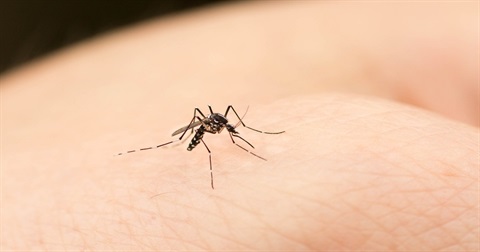Mosquitoes and midges

Mosquito control
There are dozens of different mosquitoes in northern NSW.
Mosquitoes are mainly found in coastal wetlands, freshwater habitats, or water-holding containers in our backyards.
See NSW Health’s advice for protecting against mosquitos.
Mosquito-borne diseases
Mosquitoes spread diseases such as Ross River virus and Barmah Forest virus.
These viruses aren’t fatal but can cause serious illness and have long-term health impacts.
Most cases of mosquito-borne diseases are reported in late summer and early autumn.
Figures from Northern NSW Local Health District show 429 cases of Ross River Virus were reported in 2020 - the second highest annual number of cases on record.
NSW is free of dengue and malaria.
Mosquitos also spread heartworm larvae which can infect dogs.

Tackling Mosquitoes Together
Tackling Mosquitoes Together is all about community action and doing our bit in our own backyards.
This Northern Rivers community awareness campaign aims to reduce mosquitoes and disease risk in our homes and communities.
Know how to tackle mosquitoes around your home this summer by signing up for helpful text messages.
Designed with help from local residents, the text message campaign runs across the 7 Local Government Areas of the Northern Rivers.
Reduce mozzies in your backyard
Climate change and severe wet weather events are increasing the risks of mosquito-borne disease.
Mosquitoes need water to breed, and some mosquitoes can breed in very small amounts of water.
To reduce mozzies around your home, empty all water-holding containers such as plant pot bases, buckets and roof gutters.
Empty and refill pet water bowls and bird baths weekly. Mozzies only take 8-10 days to breed!

Council carries out mosquito larvae control programs during warmer months:
Monitoring: CO² light traps are used to monitor mosquito species
Habitat reduction: innovative, chemical-free habitat modification is applied to reduce the breeding potential of mosquitoes in semi-tidal saltmarsh areas
Larvae control: biological larvicides are used to treat areas following heavy rain or higher than usual tides (large areas are treated by aircraft, smaller areas are treated on the ground).
Tweed Shire Council is also part of a joint mosquito research and information exchange program with Gold Coast City Council, Logan City and Redland Shire Councils.
Mosquito factsheet(PDF, 930KB)
Biting midges
Also known as ‘sand flies’, biting midges are tiny flies known for their very itchy bites. They are found in coastal lagoons, estuaries, mangrove swamps and tidal flats.
The ‘itchiness’ from midge bites is due to allergens in their saliva. Most people find the bites uncomfortable, and the irritation often leads to scratching.
If you live in a midge-prone area:
- Avoid going outdoors at dawn or dusk when midges are out.
- Increase air movement around the house by keeping lawns mowed and minimising low, dense vegetation as this reduces insect harbouring areas.
- Use smaller screen size on windows and doors or treat screens with a synthetic pyrethroid.
- Apply synthetic pyrethroid barrier sprays around vegetation and exterior walls to reduce midge adult numbers for many weeks.
- Wear light, long sleeve clothing outdoors when midges are active.
- Make sure you have good air circulation indoors like a ceiling or pedestal fan. Midges dislike the strong breeze and will stay away from it.
- Apply insect repellent as directed for several hours of protection.
Natural insect repellents are available for sensitive individuals or young children (and should be used by those working in natural environments or waterways).
Biting midge control in the Tweed
- Biting midge larval numbers are monitored monthly along canal estate beaches.
- Larvae are controlled with a larvicide during the year, as required, along artificial beaches on canals.
- Treatments are timed to have the biggest impact on midge adult numbers for the least number of chemical applications.
Biting midges factsheet(PDF, 1MB)
